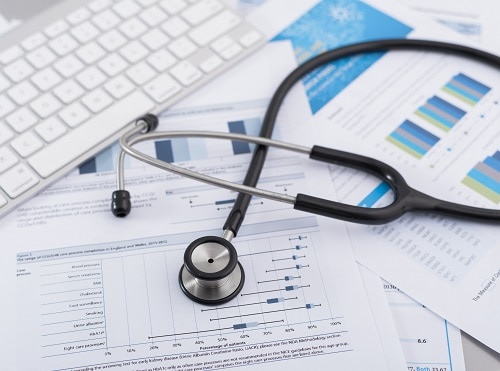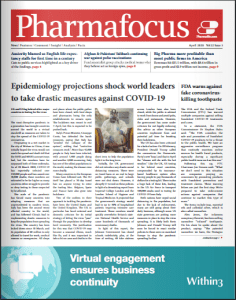
Real-world data: High on the life science agenda
pharmafile | May 3, 2017 | Feature | Business Services, Manufacturing and Production, Medical Communications, Research and Development, Sales and Marketing | real world data, real-world data
John Wise of The Pistoia Alliance discusses the necessity of real-world data for a prosperous future for the life sciences industry, from encouraging collaboration to redefining drug valuation.
The access and use of real-world data (RWD), generated both during and after treatment, will be paramount in helping the pharmaceutical industry meet the challenges of a new ‘health economy’, and demonstrate that its therapies provide value. The issues involved were discussed in depth at The Pistoia Alliance’s European Conference in March 2017, which was attended by over 120 life science professionals and representatives from top 10 pharma companies, as well as leading biotechs, technology product and service companies and academic centres. Speakers and panel attendees converged on a range of topics about RWD – including patient data capture, machine learning, data analytics, and ‘future thinking’ – discussing the need for collaboration, the future of data mining, and how best to feed-back patient outcomes data into the R&D process.
The US spends more on health per person than any other country in the world. In 2015, national healthcare expenditure increased by 5.8% to $3.2 trillion, accounting for 17.8% of Gross Domestic Product (GDP). In the UK, there is a similar picture; despite being ranked 6th of the G7 countries for healthcare spending, it still spends a considerable £179 billion – about 9.9% of GDP. Additionally, specialty drug spending is on the rise. Despite the fact only 4% of patients use speciality drugs, they have contributed to more than two-thirds of the overall spending growth in the US between 2010 and 2015. What’s more, spending on speciality drugs for cancer, respiratory conditions, central nervous system disorders, and inflammatory conditions such as rheumatoid arthritis and psoriasis, is set to increase further as more innovative new drugs come to market.
Due to political change in many countries, there are uncertainties around healthcare systems and spending. There is Brexit in the UK, with the consequences of separation from the authority of the EMA and the impact that will have on new medicine marketing authorisations. In the USA there is the promised repeal of Obamacare (The Patient Protection and Affordable Care Act) and the impact that would have on the availability of health insurance. Whatever the eventual outcomes, the pharmaceutical industry will remain under intense scrutiny to prove its productivity, efficiency and value to purchasers. After all, resources for healthcare will always be limited. Health Technology Assessment (HTA) is present in many major markets; its use is continually being extended and it is becoming increasingly sophisticated and demanding. As such, reimbursement will depend on the therapies that are judged to be the best value-for-money.
Real-world data will redefine the industry
With only 22 drugs approved by the FDA in 2016 – the lowest number since 2010 – the industry needs to prove that it can be ‘quicker, cheaper, better’ – in essence, that it can be more efficient in bringing drugs to market. It needs to be able to reassure regulatory agencies that its drugs exhibit both safety and efficacy in a series of carefully controlled randomised clinical trials, where patients are selected and monitored for a comparatively short period of time. But more than that, the industry needs to show the payers that their drugs are safe and effective when used in the wider population with patients of different age groups, with concomitant morbidities and medication use, and over comparatively long periods of time.
The information required to show this is best described as Real World Data (RWD) – data collected from outside the conventional, controlled constraints of randomised clinical trials, to better evaluate what is happening in normal medical practice. The conclusions that can be drawn from the analysis of RWD are in turn called Real World Evidence (RWE). RWE is considered to be a key way to align healthcare decision-making more closely with the needs of the individual patient, which results in a more personalised, effective, and indeed cost-effective approach to healthcare. In one keynote, it was discussed how the use of RWD is redefining the industry as we know it, especially in emerging markets. Previously, the market would have used data from the UK and USA to inform decision making, but now companies want to gather their own information to better understand how a drug might work in the post-market stages, at a local level.
Contextualising RWD will further impact how the industry interprets and uses the data it gathers. In another keynote on ‘future thinking’, it was said that there is currently a challenge with how the industry determines what the information is telling them. Take the data generated by a diabetic, for example; if there is a sudden increase in a patient’s blood sugar levels, does it mean they have just had a meal or does it mean they are on the verge of entering a diabetic coma? While the increase in technological capability has made this kind of data capture possible, companies are still challenged by making the data actionable.
Setting an example through collaboration
Every pharmaceutical company will need to be able to capture, manage, analyse and report on RWD/RWE to understand what is happening to their patient and to demonstrate the value of their drugs. Ultimately, it will be another unavoidable ‘cost of doing business’, akin to the monitoring of adverse events as part of the pharmacovigilance function. As such, the industry has two choices: go solo, or work together. In the first approach, each individual company could build its own proprietary RWD/RWE solution, requiring High Performance Computing (HPC) with Big Data storage capabilities, and with state-of-the-art analytics software deployed by hard-to-find data analysts.
Under the second approach, the industry could choose to collaborate to define the business and user requirements of a regulatory-compliant, cloud-based, SaaS RWD/RWE system which all companies could use. One industry leader noted that the industry needed a ‘North Star’, to identify and use as an exemplar of collaboration to show exactly how collaboration can work. A collaborative platform would create cross-functional synergies whilst increasing efficiencies and improving overall outcomes. This way of working would significantly reduce the amount of replicated work and resource that each company would expend.
If companies do go solo and insist on building their own systems, there is a considerable risk that the data may not be interoperable between stakeholders. Such an approach would drastically reduce the data’s impact; it would not easily be sharable between relevant parties. When viewed in these terms, the answer is clear – collaboration is essential.
What’s next for real-world data?
At present, different HTAs from different regions utilise their own methodologies to determine value. Just because one HTA perceives value in a therapy, by no means guarantees that another HTA perceives the same value. The EUnetHTA Joint Action 3 initiative is an attempt to present a more homogeneous HTA approach. However, given the current regional HTA model, the risk to the industry of an alternative, but not mandatory, homogeneous model is substantial. If EUnetHTA were to reject the value of a particular therapy from a particular company, then that therapy would not be accepted for reimbursement in the EU. From the perspective of a biopharmaceutical company, it will be better to position its therapies region by region; failure in one region with one HTA does not necessarily imply failure in another region with a different HTA. Given this mixed model, it is perhaps not unsurprising that only two biopharmaceutical companies have engaged with the EUnetHTA Joint Action 3 programme.
Driving collaboration to overcome barriers such as these is why The Pistoia Alliance was formed; to get the right people, talking about the right things, at the right time. The conference highlighted the fact that the use of patient data generated by devices has many advantages – such as improved data quality, increased efficiency and a better patient experience – but that there are no industry-wide standards to apply to analysis of the data. Such standards, including those that will result in interoperable, safe, private and sharable data, ultimately deliver value-driven benefits across the board.
Achieving the potential transformative impact of RWD/RWE requires companies to work together and ensure the representation of this data in a ‘common language’, to guarantee benefits for patients and payers alike. It was said that this will become increasingly important as and when the use of social media becomes an adopted method of data capture. Effectiveness is a global phenomenon; affordability is the regional concern. But for the patient and for healthcare to benefit, pharmaceutical companies and the HTAs must seek to collaborate outside of their own four walls.
Related Content

Reinventing the value equation
There is a duty to ensure access to innovative treatments for patients with unmet need, …

The April 2020 issue of Pharmafocus is available to read free online now!
The latest monthly edition of Pharmafocus, the April 2020 issue, is available to read for …

Protecting public health: Is real-world evidence the key?
In often tough regulatory climates and with threats to public health are growing in sceptical …








